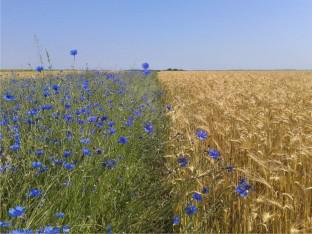Agronomy for Sustainable Development ( IF 7.3 ) Pub Date : 2023-02-02 , DOI: 10.1007/s13593-023-00870-3 Davide Bellone , Antoine Gardarin , Muriel Valantin-Morison , Alan Kergunteuil , Foteini G. Pashalidou

|
The heavy use of synthetic pesticides in agriculture has been responsible for detrimental effects on human and environmental health, making it necessary to develop more sustainable pest management strategies. A promising approach consists in the integration within cropping systems of agricultural techniques producing bottom-up effects or supporting top-down regulation of crop pests. However, there is still a lack of information on the extent to which this approach is currently being developed. In this paper, we review the last 10 years of published literature on the use in annual cash crops of three agricultural techniques: (i) crop spatial diversification, (ii) crop temporal diversification, and (iii) soil management influencing crop pests either through bottom-up effects or by supporting the top-down regulation of four categories of bioprotection agents: (i) macro- and (ii) micro-organisms, (iii) semiochemicals, and (iv) natural substances. We found that each agricultural technique is adopted to support a specific bioprotection category and to control a specific pest taxon. Crop spatial diversification was generally found to target herbivorous insects and to support macro-organism bioprotection agents. Crop temporal diversification and soil management mainly targeted pathogenic fungi and supported microorganism bioprotection agents. Despite the widespread idea that semiochemicals and natural substances are promising agents for pest regulation, their adoption remains largely unexplored. We also found that agricultural techniques are mostly adopted to support bioprotection in a conservation biological control approach while ignoring augmented bioprotection. In addition, the top-down regulation by means of bioprotection supported by agricultural techniques is just as effective against crop pests as the bottom-up effect produced by the agricultural techniques alone. We argue that a concerted effort to integrate bioprotection with agricultural techniques would open new research opportunities to reduce synthetic pesticide inputs fostering the transition from a conventional agriculture towards sustainable agroecosystems.
中文翻译:

农业技术如何调节自下而上和自上而下的监管促进作物保护免受害虫侵害。回顾
农业中大量使用合成杀虫剂对人类和环境健康造成不利影响,因此有必要制定更可持续的害虫管理策略。一种有前途的方法是将产生自下而上效应或支持自上而下调控作物害虫的农业技术整合到种植系统中。但是,仍然缺乏关于目前正在开发这种方法的程度的信息。在本文中,我们回顾了过去 10 年发表的关于三种农业技术在年度经济作物中的应用的文献:(i) 作物空间多样化,(ii) 作物时间多样化,(iii) 土壤管理通过自下而上的影响或通过支持四类生物保护剂的自上而下的调节来影响作物害虫:(i) 宏观生物和 (ii) 微生物,(iii) 化学信息素,和 ( iv) 天然物质。我们发现采用每种农业技术来支持特定的生物保护类别并控制特定的害虫分类群。作物空间多样化通常被发现以食草昆虫为目标并支持大型生物生物保护剂。作物时间多样化和土壤管理主要针对病原真菌和支持微生物生物保护剂。尽管人们普遍认为化学信息素和天然物质是有前途的害虫防治剂,但它们的应用在很大程度上仍未得到探索。我们还发现,在保护性生物控制方法中,农业技术主要用于支持生物保护,而忽略了增强的生物保护。此外,通过农业技术支持的生物保护自上而下的调节与仅由农业技术产生的自下而上的效应一样有效对抗作物害虫。我们认为,将生物保护与农业技术相结合的共同努力将开辟新的研究机会,以减少合成农药的投入,从而促进从传统农业向可持续农业生态系统的转变。通过农业技术支持的生物保护自上而下的调节与仅由农业技术产生的自下而上的效果一样有效地防治作物害虫。我们认为,将生物保护与农业技术相结合的共同努力将开辟新的研究机会,以减少合成农药的投入,从而促进从传统农业向可持续农业生态系统的转变。通过农业技术支持的生物保护自上而下的调节与仅由农业技术产生的自下而上的效果一样有效地防治作物害虫。我们认为,将生物保护与农业技术相结合的共同努力将开辟新的研究机会,以减少合成农药的投入,从而促进从传统农业向可持续农业生态系统的转变。


























 京公网安备 11010802027423号
京公网安备 11010802027423号